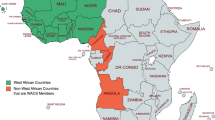Abstract
Background
Mass-casualty terrorist incidents are a medical and organisational challenge for every hospital. The Terror and Disaster Surgical Care (TDSC®) course was developed because such incidents are associated with special injury patterns, escalating situations, and surges of casualties and haemodynamically unstable patients requiring treatment and can overwhelm the resources of hospitals.
Materials and methods
The course currently lasts two-and-a -half days and is designed for 18–21 experienced surgeons, anaesthetists and clinical emergency physicians (who form groups of three for the tabletop simulation game). From 2017 to 2019, a total of 20 courses with 437 participants were conducted. The data in this study were collected from these 437 participants.
Results
Most of the participants were male (82%); 64% of participants specialised in a major field of surgery (general surgery, visceral surgery, vascular surgery, trauma surgery and orthopaedics). At the time of the course, most participants (86%) were department heads, senior physicians or specialists. The tabletop simulation game, which was specifically developed for the course, as well as the presentations were rated good to very good. The result of the overall course evaluation, which included aspects such as organisation, professionalism, content and teaching, was on average 1.34 and thus very good.
Discussion
The TDSC course complements already established courses and provides training in tactical surgical care after hospital admission. The TDSC course integrates and builds on elements of individualised trauma care such as the primary survey and the extended focused assessment with sonography in trauma (eFAST). This underlines again that it complements and does not replace other course formats. We can conclude that the presentations and the tabletop simulation game were well suited to the target group and that the participants were able to increase their knowledge of this complex subject.





Similar content being viewed by others
References
Carli P, Pons F, Levraut J, Millet B, Tourtier JP, Ludes B, et al. The French emergency medical services after the Paris and Nice terrorist attacks: what have we learnt? Lancet. 2017;390(10113):2735–8. https://doi.org/10.1016/s0140-6736(17)31590-8.
Femy F, Follin A, Juvin P, Feral-Pierssens AL. Terrorist attacks in Paris: managing mass casualties in a remote trauma center. Eur J Emerg Med. 2019;26(4):289–94. https://doi.org/10.1097/mej.0000000000000555.
Franke A, Bieler D, Friemert B, Schwab R, Kollig E, Gusgen C. The first aid and hospital treatment of gunshot and blast injuries. Deutsches Arzteblatt internat. 2017;114(14):237–43. https://doi.org/10.3238/arztebl.2017.0237.
Heldenberg E, Givon A, Simon D, Bass A, Almogy G, Peleg K. Civilian casualties of terror-related explosions: the impact of vascular trauma on treatment and prognosis. J Trauma Acute Care Surg. 2016;81(3):435–40. https://doi.org/10.1097/ta.0000000000001123.
Bieler D, Franke A, Kollig E, Gusgen C, Mauser M, Friemert B, et al. Terrorist attacks: common injuries and initial surgical management. Eur J Trauma Emerg Surg Soc. 2020. https://doi.org/10.1007/s00068-020-01342-z.
Franke A, Bieler D, Friemert B, Kollig E, Flohe S. Prä- und innerklinisches management bei MANV und terroranschlag. Der Chirurg. 2017;88(10):830–40. https://doi.org/10.1007/s00104-017-0489-x.
Bieler D, Kollig E, Völlmecke M, Janiak F, Blätzinger M, Franke A. Schuss- und ExplosionsRegister (SExReg) - Vorstellung des Datensatzes. Implementierung Erste Ergebnisse Notfall Rettungsmed. 2018;21:289–95. https://doi.org/10.1007/s10049-017-0344-0.
Edwards DS, McMenemy L, Stapley SA, Patel HD, Clasper JC. 40 years of terrorist bombings - a meta-analysis of the casualty and injury profile. Injury. 2016;47(3):646–52. https://doi.org/10.1016/j.injury.2015.12.021.
Khorram-Manesh A. Europe on fire; medical management of terror attacks - new era and new considerations. Bulletin Emerg Trauma. 2016;4(4):183–5.
Ashkenazi I, Sevi R, Turegano-Fuentes F, Walsh MS, Olsha O, Schecter WP, et al. Hemodynamic consequences of extremity injuries following a terrorist bombing attack: retrospective cohort study. Eur J Trauma Emerg Surg. 2018. https://doi.org/10.1007/s00068-018-1017-5.
Franke A, Bieler D, Friemert B, Kollig E, Flohe S. Preclinical and intrahospital management of mass casualties and terrorist incidents. Zeitschrift fur alle Gebiete. 2017;88(10):830–40. https://doi.org/10.1007/s00104-017-0489-x.
Djalali A, Della Corte F, Foletti M, Ragazzoni L, Ripoll Gallardo A, Lupescu O, et al. Art of disaster preparedness in European union: a survey on the health systems. PLoS Curr. 2014;6:1. https://doi.org/10.1371/currents.dis.56cf1c5c1b0deae1595a48e294685d2f.
Lennquist Montan K, Hreckovski B, Dobson B, Ortenwall P, Montan C, Khorram-Manesh A, et al. Development and evaluation of a new simulation model for interactive training of the medical response to major incidents and disasters. Eur J Trauma Emerg Surg. 2014;40(4):429–43. https://doi.org/10.1007/s00068-013-0350-y.
Franke A, Bieler D, Paffrath T, Wurmb T, Wagner F, Friemert B, et al. ATLS(R) and TDSC(R): how it fits together : a treatment concept for mass casualty and terrorist-related mass casualty situations, life-threatening and special scenarios. Der Unfallchirurg. 2019. https://doi.org/10.1007/s00113-019-00735-z.
Author information
Authors and Affiliations
Consortia
Corresponding author
Ethics declarations
Conflict of interest
DB and GA are instructors of the TDSC course. AF and BF are directors of the TDSC course. DB, AF, BF and GA developed the TDSC course concept. MH is the educator of the TDSC course. MB and JS are executive directors of the AUC GmbH which offers the TDSC course.
Rights and permissions
About this article
Cite this article
Bieler, D., Franke, A., Blätzinger, M. et al. Evaluation of the Terror and Disaster Surgical Care course. Eur J Trauma Emerg Surg 46, 709–716 (2020). https://doi.org/10.1007/s00068-020-01418-w
Received:
Accepted:
Published:
Issue Date:
DOI: https://doi.org/10.1007/s00068-020-01418-w




